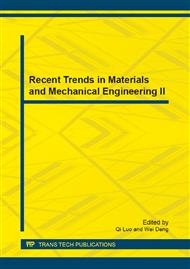p.254
p.259
p.263
p.269
p.276
p.281
p.291
p.298
p.305
Development of Sediment Brick Utilizing Reservoir Sediment and Fly Ash
Abstract:
Electrical companies generate electricity mainly from two major types of plant; hydroelectric plants and thermal plants. Hydroelectric is the term referring to electricity generated by hydropower; the production of electrical power through the use of the gravitational force of falling or flowing water through dams operation. The sedimentation of such dams over years will cause large capacity losses of the dams. Thermal plants generate electricity through coal-fired power plants which produce millions tons of fly ash yearly. This fly ash accumulates rapidly and causes enormous problems of disposal. Therefore, the research work presented in this paper is dealing with utilizing reservoir sediment and fly as to form brick under pressure. Sediment brick can be produced as a load bearing brick with compressive strength is greater than 7 N/mm2.
Info:
Periodical:
Pages:
276-280
Citation:
Online since:
September 2013
Keywords:
Price:
Сopyright:
© 2013 Trans Tech Publications Ltd. All Rights Reserved
Share:
Citation:


